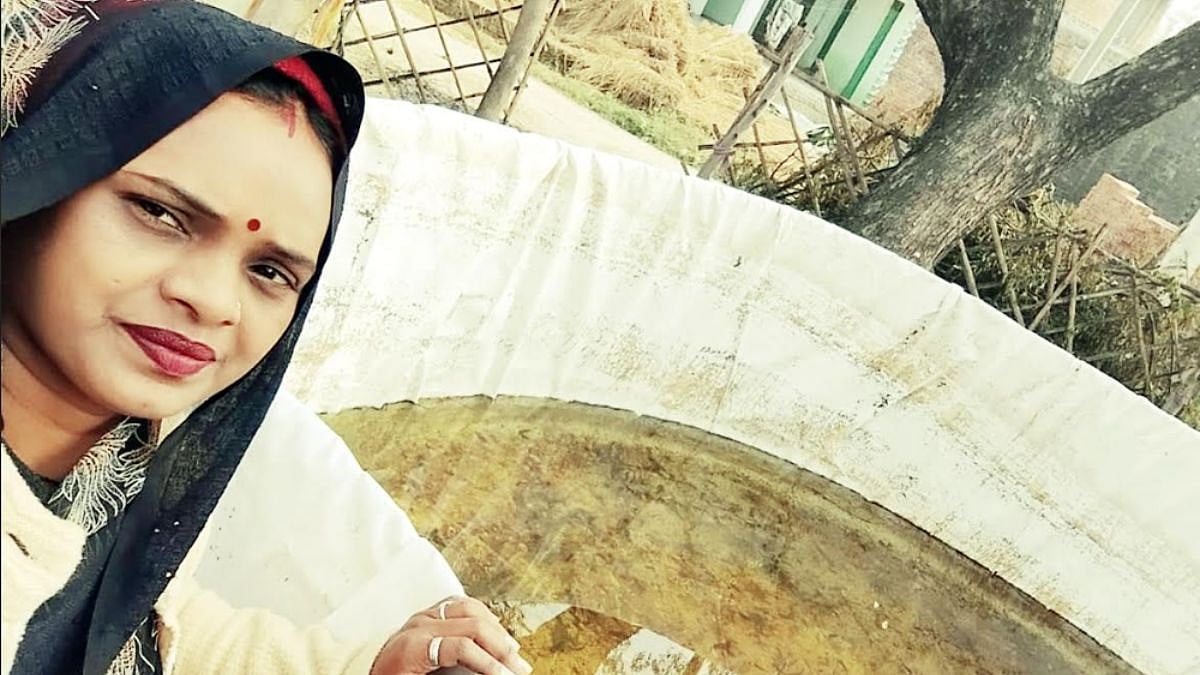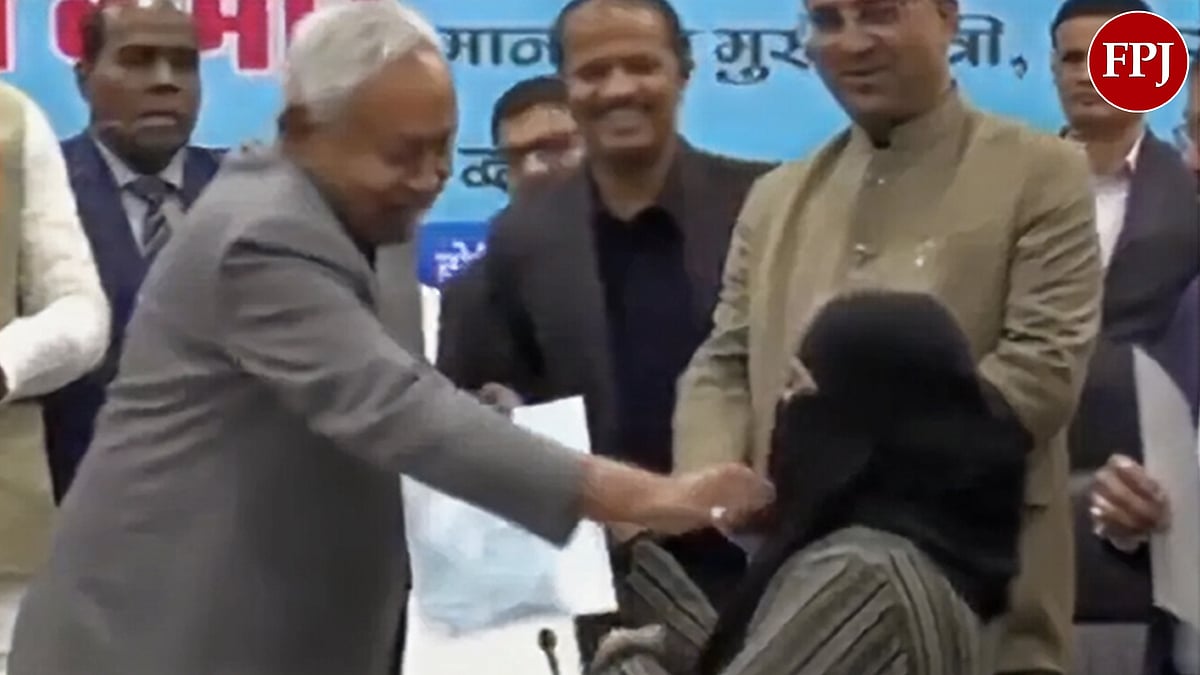Is globalisation failing? The Sri Lankan economic crisis is a grave warning that reckless consumption promoted by global MNCs, IMF, and World Bank at the cost of localised economies and ignoring decentralised agriculture, rural or small entrepreneurship is not a sustainable model. Ukraine is possibly the last nail on a crisis-hit globe. The war is not doing to India but it is disrupting the global supply chain impacting all countries “like the Covid-19 pandemic," Finance Minister Nirmala Sitharaman tells Rajya Sabha.
The Sri Lankan crisis and the disquiet among the working class reflected by the March 28-29 All-India strike by dozens of labour unions are a pointer to impending danger. It is due to the faulty global designs of curbs on wages, cash transactions, over-dependence on banks, and extreme stress on high-cost infra and other facilities. Sitharaman assures that the central government is focusing on “sustained recovery through a predictable taxation regime.”
India has to recall the strength of its mixed economy. That was the people’s economy and overcame the Soviet Union collapse or the 2007 meltdown. But since 1948, Sri Lanka had never been in such a deep economic crisis. It has a 10-hour power cut, extreme fuel crisis, and rice is selling at Rs. 500 a kg. Exams are put off due to a shortage of paper and two newspapers have ceased publication. It has rushed to sign six pacts with India with $ 2.4 billion credit lines and assured petroleum supply. A small neighbour in deep trouble with forex reserves falling to $ 2.3 billion, not enough for immediate imports and external debt pegged at $ 45 billion, $ 8 billion to China alone, and outstanding sovereign bonds of $12.55 billion shakes India in more than one way. The 119 percent Lankan debt to GDP now has started a distress refugee influx to the Tamil Nadu shores of India. Lanka hit by globalisation, reckless imports, multiplexes, malls, and artificial glitter has lessons for all.
The crisis was in the making for almost a decade, largely due to the country’s excessive dependence on imports and borrowings for a raft of massive infrastructure projects. It highlights how unbridled borrowing for big-ticket infra projects such as those under China’s Belt and Road Initiative can lead to complications. The government’s tax cuts and switch to organic agriculture further squeezed revenues. Indian working-class protest called by dozens of labour unions representing both public and private sectors highlights the difficult situation that stalks the country with more privatisation, striving to bypass the minimum wages and fewer jobs. It’s against TUs say, new labour law allowing contract employment; giving employers greater leeway in setting wages and extending working hours. The sale of PSUs throws more out of jobs. Reports say that banks were hit across the country and in some areas in the south, transport and normal lives were affected. The government has repeatedly been telling them it is trying to create jobs, continuing with free food grains and edible oil dole at least till September for 80 crore people belonging to the families of farmers and labourers. It is a heavy burden on the exchequer. The government committed to welfare is spending almost Rs 4.5 lakh crore since 2020 through a regime of high inflation and not so high production as purchasing power capacity has reduced.
Sri Lanka, the workers’ stir, and the global economic crisis testify that the 1991 privatisation prescription of the IMF-World Bank is not the solution. The G-20 prescription of monopolisation and centralization of the economy at the cost of labour has caused more problems for real growth though it multiplies profits of MNCs and large companies control the economies. It has led to inequitable growth and the pandemic has come as a great destroyer of whatever little was left. The world did not learn from the follies of the 2007-08 Lehman Brothers-financial institutions induced sub-prime crisis of siphoning of people’s deposits that hit the US and Europe the most. The US public sector AIG took the worst hit.
It also shows that a globalised war by the US in Afghanistan, Iraq, Syria, and the Middle East has helped none but the arms lobby. It weakens the economies of the superpower and its NATO allies. Shaky European economies are afraid of going to war with Russia or even checking its aggression in Ukraine. The people in the US are against Joe Biden's administration rushing to another war. They do not want more body bags. The US today has almost $27 trillion of global debt, largely from five countries, including China. The globe continues with the crisis and India would have to lead in correcting the course. Should the world go back to strengthening the public sector and check the private sector that has fudged balance sheets and misappropriated the public money? It’s wishful thinking in an unethically controlled world.
The Narendra Modi government has the power with its massive mandate to take the call for a change. It must review infra and extreme dependence on coal-generated electricity for domestic running of trains, buses, and cars. The centralised control is susceptible to security threats that can jeopardise economic activities. It should promote the cash economy as digital stresses the banking system and is vulnerable to fraudulent deals. Cash is inclusive, quick, and has the least cost.
Lanka learns the hard way that high consumption is not sustainable without higher production, income, and self-reliance. India has been trying to be atmanirbhar, the reincarnation of Gandhian swadeshi, but all the same opting for FTA with Australia and West Asian countries. It also has an 87.8 percent debt to GDP ratio. The model of expensive toll roads, high-priced transportation-communication, high income, and other taxes are leading to soaring costs, inflation, and a thaw in the economy. India unwisely is junking 10-year-old private, government vehicles and kisan tractors. It devastates wealth building. Similar luxurious follies have led to the Lankan crisis.
During the last 30 years, the world has seen Soviet Marxism collapsing, Maoism turning to capitalist exploitation, Manmohanomics failing and Theodore Levitt’s globalisation becoming junk. It is India’s turn to give a viable alternative of sustainable consumption and a mix of a people-centric independent low-cost mixed economy free from the control of big banks and large corporations. Lanka exposes the dangers; the world has to trudge cautiously.
(The writer is a veteran journalist, an observer of the socio-politico economy, and a media academician)









